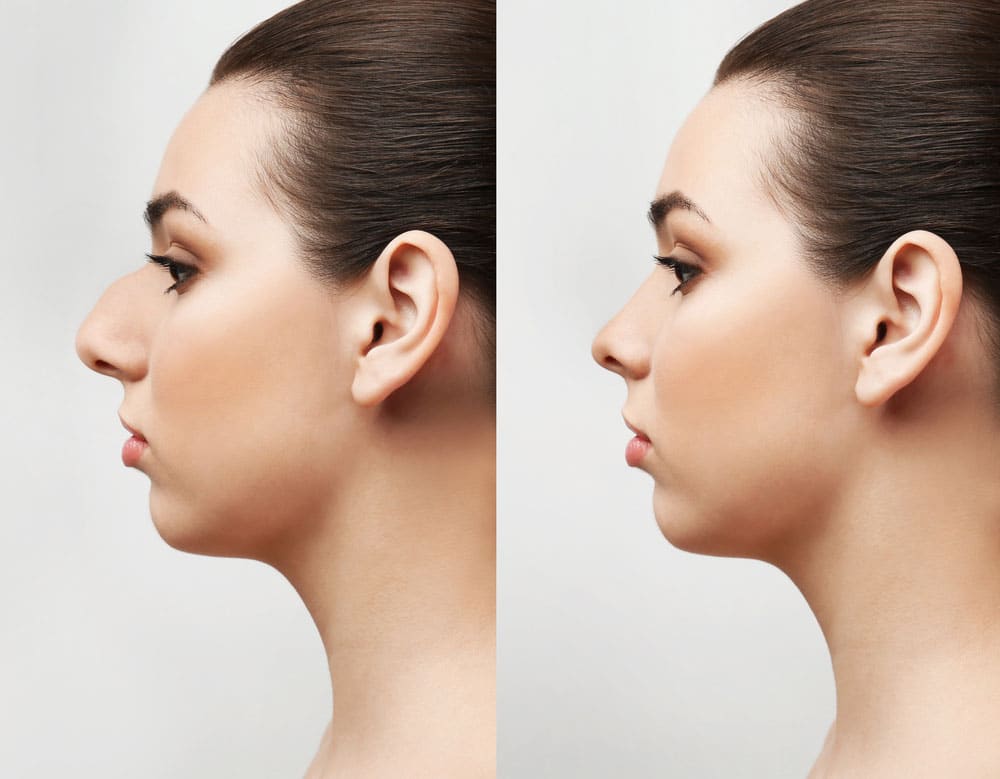- Mon - sat 10.30 - 18:00
- Call Us: 9989077459
- info.aastitv2ab@gmail.com

Since your nose sits in the middle of your face, it’s not only one of the first things that people notice about you, but it helps create who you are to others. When it is out of balance, it can throw off your entire facial proportions, making you feel self-conscious. A rhinoplasty is a surgical procedure to fix the look, shape, and size of your nose. Many plastic surgeons consider rhinoplasty surgery to be the most difficult cosmetic procedure to perform. Creating the perfect nose for your unique facial features requires extreme technical skill on the part of your surgeon as well as a keen aesthetic eye. In short, a rhinoplasty is at the crossroads where plastic surgery meets art.
Dr.Beena has received advanced training in both primary and revision rhinoplasty surgery under some of the best rhinoplasty surgeons in the world. He has published multiple articles on rhinoplasty surgery and knows that while some patients may have just one aspect of their nose that they don’t like, others may have several. During your initial consultation, Dr. Beena will work with you to truly understand the desired size, shape, and appearance of your ideal nose, and then assess your anatomy, skin tone and texture to determine what exactly can be achieved. Dr. Beena firmly believes that the best rhinoplasty is the one that is done correctly the first time.
There are two main types of rhinoplasty surgeries: open and closed. In the closed technique,Dr. Beena places several small incisions on the inside of your nose through which he accesses and modifies the underlying structures. Although this type of technique is less invasive, it is more difficult to adequately modify and secure the structures of the nose for optimal results which is whyDr. Beena mostly performs an open rhinoplasty. For an open rhinoplasty,Dr. Beena places a small, external incision on your columella and hides the remaining incisions inside of your nose. This allows him full access to all underlying nasal structures. During your open rhinoplasty surgery,Dr. Beena will harvest the cartilage from your septum to re-construct your nose from the inside out.
After your rhinoplasty surgery, your nose will be in a splint and it will be taped. Both will be removed at your first follow-up appointment along with the internal splints that will line the inside of your nose. If your nasal bones need to be moved during surgery, you may have black eyes afterward. These will gradually resolve during the first couple of weeks following your procedure. Although you will be able to breathe through your nose right after surgery, your nasal passage may then become blocked due to swelling. Don’t be alarmed as this will gradually resolve within the first 1-2 weeks.
Nasal swelling is completely normal and can last for a long time after surgery so you need to be patient. Although the swelling will be most prominent for the first 3 months, it can persist for up to a year. The nasal tip, in particular, is prone to the most noticeable swelling and is often the last part of the nose to fully heal. Furthermore, as the swelling subsides, it does not always do so symmetrically. You may notice that the sides of your nose are swelling at different rates and to different degrees. This is a normal part of the healing process and is no cause for concern.
A: Yes. Wide nostrils or your alar base can be reduced at the time of your rhinoplasty. If this is the only part of your nose which bothers you then an alar base reduction can be performed either in the operating room or as an outpatient procedure in the office.
A: A rhinoplasty is a purely cosmetic procedure to improve the look, size, and shape of your nose and is not covered by insurance. Your breathing may improve slightly with a rhinoplasty alone, but if you have an airway obstruction from a septal deviation or turbinate hypertrophy, this can possibly be improved with a septoplasty/turbinectomy which is often covered by insurance.* Dr. Sieber will go over the best options for you during your initial consultation.